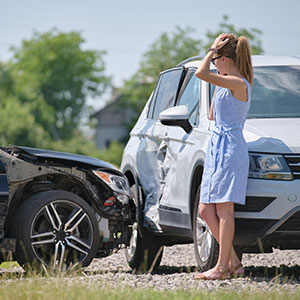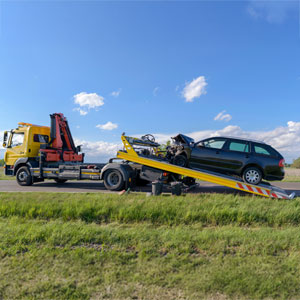Improper Use Of Jury Instruction On Aggravation Of Pre-Existing Condition
Car AccidentsIn the case of Sanchez v. Martin, Case Number 4D17-1731 (Fla. 4th DCA June 6, 2018), Florida’s Fourth DCA reversed a $1.5 million jury verdict over the improper use of a jury instruction regarding the aggravation of a pre-existing condition or injury.
Not An “Alternative” Way Of Looking At Evidence
This case started out as many Florida car accident cases do. The plaintiff was a passenger on a public bus when another driver pulled out in front of the bus. The plaintiff fell from his seat and he went to a local ER for complaints of back pain. The plaintiff was eventually diagnosed with three herniations in his back to which his doctor claimed were caused by the accident (as opposed to aggravated or made worse by the accident).
It is significant to mention that an injury that is caused for the first time by an accident cannot be aggravated by that same accident. Therefore, it is one or the other but it cannot be both.
Be that as it may, the plaintiff’s doctor testified that these herniations were caused by the accident. In arriving at this conclusion, the doctor relied on the medical records available, the MRI, and the plaintiff’s representation to the doctor that he had not previously experienced back problems before the accident.
The plaintiff’s doctor also testified that there was no way of conclusively determining from the MRI whether the herniations occurred before, during, or after the accident.
On the other hand, the defendant’s doctors testified that any injury that the plaintiff may have sustained in the accident was a non-permanent sprain/strain type injury and that there was no objective evidence of traumatic injury (instead, all of the findings on the MRI were the result of natural degeneration due to age).
Improper Use of Jury Instruction On Aggravation Of Injury
At the end of the trial, the plaintiff asked the judge to read Florida Standard Civil Jury Instruction 501.5 regarding aggravation of pre-existing conditions. The defense objected to the use of this instruction. As you can imagine, the reason for the defense’s objection to the instruction is the part that says:
…if it cannot be said that the condition would have existed apart from the injury, then you should award damages for the entire condition suffered…
Consequently, this is the reason why plaintiffs like this instruction. However, the plaintiff carries the burden of proof in American courts and the plaintiff’s doctor testified that the injury was new (caused by the accident). Therefore, if the injury is new then logic follows that there can be no need to instruct the jury on awarding damages for the “entire condition” in the event that the jury can’t determine what was caused by the accident and what was pre-existing.
Prior Case Precedent
The Fourth DCA said that it is well established that jury instructions must be predicated upon facts. Therefore, they said it was “improper to [give an instruction] on an issue where either no material evidence or no evidence at all has been submitted” citing Winn-Dixie Stores, Inc. v. Nall, 302 So. 2d 781 (Fla. 3d DCA 1974) and Carmona v. Carrion, 779 So. 2d 337 (Fla. 2d DCA 2000)(“A trial court cannot give a particular jury instruction on an issue unless material record evidence supports that instruction.”)
The Fourth DCA went on to say that the decision in Carmona was “instructive.”
Lesson Learned
So there you have it. This was a case where the defense admitted liability for the accident (but did not admit causation of injuries or agree to the value of any damages) but yet the plaintiff still walked away with nothing.
This was undoubtedly difficult to swallow. However, we must look at why this happened if we are to learn from it. The reason why the plaintiff lost is because the testimony was that the injury was caused by the accident. In other words, this means that the injury was new.
If there had been doubt about whether it was caused by the accident or was old (and hence re-injured or aggravated by the accident), then the testimony should have been that the conditions “may have existed before the accident” but appear to have been “asymptomatic” (meaning that they didn’t cause any significant problems to the plaintiff).
This is not simply a play on words—it is serious business. I have often heard that you can take an MRI film of just about anyone who is aged 4o or older and you will likely find some spinal abnormality in just about all of them. While that may be true, the majority of those people have not had a traumatic event (such as an accident) or a reason to have an MRI and realize that they have a pre-existing condition (osteophytes and other types of spinal abnormalities often take many years to form).
Therefore, to be more medically precise, many of these people may have in fact had an unknown, undiagnosed, and asymptomatic medical problem that only need an event (such as an accident) to become symptomatic. This is why we say that people over a certain age are more susceptible to injury and this is what the plaintiff’s attorney was really trying to convey. The problem was that the evidence was just not there to support it.
Call Us For Help With Your Case
For help with your car accident in Polk County, Florida, you should contact a Polk County car accident attorney. A consultation with us is free.


